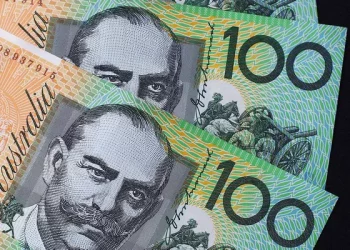The foreign exchange (forex) market is known for its volatility, where the value of currencies fluctuates based on a variety of factors including economic indicators, geopolitical events, and market sentiment. For many years, the New Zealand Dollar (NZD) has been considered a relatively minor player in the global forex market compared to currencies like the US Dollar (USD), Euro (EUR), or British Pound (GBP). However, there have been specific periods when the NZD has outperformed the USD and became stronger. Understanding these events provides valuable insights into the dynamics of the forex market and how currency values evolve based on underlying economic conditions.
In this article, we will explore the historical context in which the New Zealand Dollar (NZD) has strengthened against the US Dollar (USD), analyze the factors that contributed to these changes, and look at the key timeframes when this phenomenon occurred.
The NZD and USD: An Overview
Before diving into the periods when the NZD was stronger than the USD, it’s essential to understand the relationship between these two currencies.
The New Zealand Dollar (NZD) is the currency of New Zealand and is often considered a commodity currency. This means that its value is somewhat correlated to global commodity prices, particularly agricultural exports like dairy, meat, and wool. New Zealand’s economy is small relative to major world economies, and thus, the NZD is generally more volatile than larger currencies.
The US Dollar (USD), on the other hand, is the world’s reserve currency and the most traded currency in the forex market. It is the benchmark for many other currencies and plays a critical role in international trade, finance, and central banking operations.
As a result of these dynamics, the NZD has historically been weaker than the USD for the majority of the past few decades. However, periods of strength in the NZD against the USD have been recorded at various points in time, driven by several domestic and international factors.
The Factors That Influence the Strength of NZD Against USD
To understand when the NZD was stronger than the USD, we must first consider the factors that can drive fluctuations in the value of the New Zealand Dollar against the US Dollar. Several key drivers include:
1. Commodity Prices
New Zealand is an export-driven economy, with major exports including dairy products, meat, and wood. When global demand for these commodities rises, the value of the NZD tends to increase because higher commodity prices generally lead to increased export revenues for New Zealand.
2. Interest Rates and Monetary Policy
Interest rates are a critical factor in currency strength. If the Reserve Bank of New Zealand (RBNZ) raises interest rates relative to the Federal Reserve’s policy rate, this can lead to an appreciation of the NZD. A higher interest rate attracts investment from international capital, boosting demand for the NZD. Conversely, a lower interest rate can weaken the NZD.
3. Economic Performance
The overall health of the New Zealand economy, including GDP growth, employment data, inflation, and trade balances, influences the value of the NZD. A strong economy can lead to an appreciating currency as it builds investor confidence.
4. Global Sentiment and Risk Appetite
The NZD is often seen as a “risk-on” currency. In times of global risk appetite, investors are more likely to move money into assets in emerging markets or commodity-rich countries like New Zealand. This leads to an appreciation of the NZD. Conversely, in times of risk aversion or market uncertainty, investors may seek the safety of the US Dollar, leading to a depreciation of the NZD.
5. US Economic and Political Conditions
The strength of the USD is primarily determined by US economic data and geopolitical conditions. If the US economy is performing poorly or there are concerns about political stability, the USD may weaken relative to other currencies, including the NZD.
Historical Instances When the NZD Was Stronger Than the USD
There have been a few significant periods in history when the New Zealand Dollar (NZD) was stronger than the US Dollar (USD), although these instances have been relatively brief. Let’s take a look at these notable periods.
1. The 1970s: The Early Years of Floating Exchange Rates
In the 1970s, the global financial system underwent a significant transformation. After the collapse of the Bretton Woods system in 1971, many currencies, including the US Dollar and the New Zealand Dollar, moved to a floating exchange rate regime. Under the Bretton Woods system, currencies were pegged to the US Dollar, which was in turn pegged to gold.
In 1973, New Zealand adopted a floating exchange rate system, which meant the value of the NZD could fluctuate based on market forces. During the first few years of this new system, the NZD appreciated significantly against the USD.
At its peak in the early 1970s, the NZD briefly surpassed the USD. This period was marked by a strong global economy and rising demand for New Zealand’s agricultural exports. Additionally, the US experienced rising inflation due to the oil crisis, which led to a weakening of the USD.
2. The Mid-2000s: The NZD Strengthens Amid High Commodity Prices
One of the most significant and prolonged periods when the NZD was stronger than the USD occurred between 2005 and 2008. During this time, the New Zealand economy was benefiting from a combination of factors that supported the NZD’s strength:
Rising Commodity Prices: The price of commodities, especially dairy, surged during this period. As one of the world’s largest exporters of dairy products, New Zealand benefited from high demand for these goods, which led to a boost in foreign exchange earnings.
Global Risk Appetite: Global markets were in a relatively strong growth phase, and investors were willing to take on more risk. This environment was favorable to risk-on currencies like the NZD.
Strong Interest Rates: The Reserve Bank of New Zealand (RBNZ) maintained relatively high interest rates during this period to combat inflation. This made the NZD an attractive currency for carry trades, where investors borrow in low-interest-rate currencies (such as the JPY or USD) and invest in higher-yielding currencies like the NZD.
During 2007 and 2008, the NZD hit a high of 1 NZD = 0.82 USD, and for a brief period, it was stronger than the USD. However, the global financial crisis in 2008 resulted in a sharp reversal in currency values, and the NZD quickly depreciated against the USD as global risk sentiment turned negative.
3. The Post-COVID Recovery: The NZD Strengthens Again
The most recent example of the NZD surpassing the USD occurred during the early stages of the post-COVID economic recovery. After the initial shock of the pandemic in 2020, New Zealand managed to keep the virus largely under control, allowing the economy to recover faster than many other countries. Additionally, New Zealand’s strong export sector, particularly in dairy and forestry, continued to benefit from global demand.
In 2021 and early 2022, the NZD approached parity with the USD and even surpassed it for brief periods. This was driven by a combination of factors:
Strong Economic Recovery in New Zealand: As New Zealand reopened and economic activity surged, investor confidence in the country’s economic resilience grew.
Commodity Demand: As global demand for commodities rebounded strongly, the NZD benefitted from higher export revenues.
US Dollar Weakness: Meanwhile, the US Dollar was weak due to the US Federal Reserve’s accommodative monetary policies, including low interest rates and large-scale fiscal stimulus. This contributed to the strength of other currencies, including the NZD.
At its peak in early 2021, the NZD briefly traded above 0.73 USD, its highest level since the 2000s, and at times even reached parity with the USD during intraday trading.
Why These Periods Were Temporary
Although there have been brief periods when the NZD was stronger than the USD, these instances have typically been short-lived. There are several reasons for this:
Commodity Price Volatility: New Zealand’s economy is heavily dependent on commodity exports. Commodity prices can be highly volatile, and any downturn in global demand or prices can lead to a sharp depreciation of the NZD.
Monetary Policy Divergence: While the RBNZ can influence the strength of the NZD through interest rates, the US Federal Reserve has a far larger impact on global markets due to the USD’s role as the world’s reserve currency. Whenever the Fed shifts policy, it often leads to significant movements in the USD.
Global Economic Shocks: External events, such as the 2008 financial crisis or the COVID-19 pandemic, can lead to sudden and unpredictable shifts in the forex market. These shocks often result in a flight to safety, with the USD typically benefiting as a haven currency.
Small Market Size: The New Zealand economy is much smaller than the US economy, which means that the NZD is more susceptible to fluctuations in global investor sentiment and commodity market dynamics. In comparison, the USD is a far more stable currency due to the size and global influence of the US economy.
Conclusion
The New Zealand Dollar (NZD) has had several instances of trading stronger than the US Dollar (USD) throughout history. These periods have been driven by a combination of factors, including strong commodity prices, favorable interest rates, and shifts in global economic conditions. While the NZD has been stronger than the USD at various points, such instances have typically been short-lived due to the volatile nature of commodity markets and the dominant role of the US Dollar in the global economy.
For forex traders and investors, understanding these dynamics and the periods when the NZD has been stronger than the USD can offer valuable insights into market behavior and currency trading strategies. However, it is important to remember that the forex market is highly unpredictable, and trends can change quickly in response to new economic, geopolitical, or market developments.
Related Topics:

























